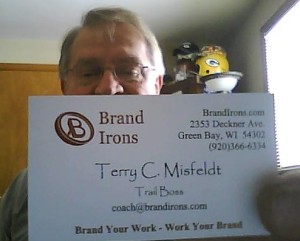Your business card is a major component of your corporate marketing strategy. It is a mini-billboard for your business and tells prospective customers how they can reach you.
How your card looks is critical. How you present it to people is pivotal. The information it contains enables people to contact you. Let’s dig into the details.
1) The look of your card. Your corporate logo should be prominent on your business card. Call it brand recognition. Your name is also critical, so make sure it’s spelled correctly when you proof the card (Yes, ask for a proof and proofread your card before authorizing printing). Your title is less important than the information on how to reach you. If you want people to call, make sure your phone number is there. Your address is vital if you operate a retail store. Your website and E-mail are important if you want people to contact you through those electronic channels.
On a side note, make sure your website reflects the image you convey on your business card to reinforce your brand identity.
2) Presenting your card. How you hand out your card is a key presentation element. If you attend a networking event, having a good supply of business cards readily accessible is a key to success in discovering potential clients or referral sources. Practice pulling out your card from your purse, pocket, or other storage place so you can grab the card without looking at it and present it properly. Hand the card to the other person so the information is easily seen and creates a positive brand impression right away. If they are good at networking, they will accept your card and look more closely at it to digest your information and ask questions to stimulate the conversation. Be polite and ask for their card, too, and if you want to make a note about them afterwards, proper etiquette is to ask their permission to write on their card. Note: It’s not a good idea to start writing on their card without asking first.
3. It’s about information. Your card should contain essential information and not leave the recipient guessing how they can follow-up with you. Even though your company may have a myriad of phone lines coming in, highlight the dominant number that you accept calls on. The impression people get when they call the corporate number and have to wade through a robo-operator to get your extension and voice mail message is that you don’t want their business. Callers like to talk to a real person right away. The same holds true for an E-mail address. Make sure the one you give people on your card is one you check regularly, and when you get an E-mail from someone you’ve met, at least acknowledge that you received it. As much as we rely on electronic communication techniques in today’s business environment, people still like to interact with people.
Your business card is the leave behind you have to create an impression with someone you’ve met face-to-face. It’s also a symbol of your brand identity, so present it properly. Keep in mind it can also be used as a reminder when you mail a letter to someone. It’s considerate to include two cards in a letter, one for the recipient and one for them to give to a potential referral.




